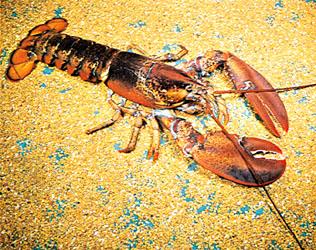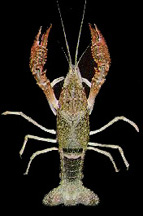|
|
Canku Ota |
|
|
(Many Paths) |
||
|
An Online Newsletter Celebrating Native America |
||
|
October 18, 2003 - Issue 98 |
||
|
|
||
|
A Cherokee Creation Story |
||
|
They would send one animal but he would never come back unable to find dry land. The animals would regularly check the water below.
Finally, they sent grandfather buzzard, the mighty buzzard, down and the land was almost dry. As the buzzard flew, he'd fly down close to the land; and every time he would flap his mighty wings, he would form a mountain and a valley. That's why the Cherokee land has mountains and valleys in it today. All the animals came down and settled on the earth. After they did, they realized
they had no light. So they called to Grandfather and asked would
he give them light, and he did. He brought to them the sun. He the
sun down right by the ground, and it was too hot for the
Finally, they got the sun far enough out so it would not burn and we would have night. And Grandfather told them, "Now that I have done this for you, I ask that all the four-legged, and all the animals, and the plants stay awake for seven days and seven nights." This is why today, when a warrior goes to cross his manhood, he fasts and sweats for seven days. All the animals and all the plants fell asleep except for some.
The plants, the Douglas fir, the cedar, the pine, and a few others stayed awake for seven nights and for seven days. That's why only these, among all the plants, are allowed to stay green all the year round. The other plants fell asleep and so must sleep part of every year. Print and Color Your Own Crayfish Picture |
|
|

 Many,
many moons ago, in the beginning of time, the earth was all water.
There was no land. All the four-leggeds, all the animals, all the
winged-ones, lived up in the sky on the clouds, they were waiting
for the land to dry, but it would not dry.
Many,
many moons ago, in the beginning of time, the earth was all water.
There was no land. All the four-leggeds, all the animals, all the
winged-ones, lived up in the sky on the clouds, they were waiting
for the land to dry, but it would not dry.  Finally,
after a dog had looked and reported back that it was still wet,
they sent the water beetle. The water beetle dove into the water,
grabbed a handful of mud at the bottom, brought it up and placed
it on top of the water, and it started to dry, started to build
land. He brought more and more; and still they waited for it to
dry, still they waited and waited.
Finally,
after a dog had looked and reported back that it was still wet,
they sent the water beetle. The water beetle dove into the water,
grabbed a handful of mud at the bottom, brought it up and placed
it on top of the water, and it started to dry, started to build
land. He brought more and more; and still they waited for it to
dry, still they waited and waited.  So
they pushed and pushed, till finally they got it far enough out
that it would not burn all the time, but it was still so hot that
the crawfish was baked. That's why, if you look at him today, he
is red from the sun being too close.
So
they pushed and pushed, till finally they got it far enough out
that it would not burn all the time, but it was still so hot that
the crawfish was baked. That's why, if you look at him today, he
is red from the sun being too close. The
owl stayed awake, and that's why he has vision to hunt at night
now.
The
owl stayed awake, and that's why he has vision to hunt at night
now.  Description:
Adult red swamp crayfish are colored dark red, whereas juveniles are a
drab gray. A blue vein is visible under the tail of this species, and
it also has a wedge-shaped black stripe on dorsal side of the abdomen.
The texture of the carapace (shell) is rough, and the tail and carapace
are not separated by an abrupt space. The pincers are narrow and long
and may appear red in subadults. Full-grown adult crayfish can measure
20 cm in length.
Description:
Adult red swamp crayfish are colored dark red, whereas juveniles are a
drab gray. A blue vein is visible under the tail of this species, and
it also has a wedge-shaped black stripe on dorsal side of the abdomen.
The texture of the carapace (shell) is rough, and the tail and carapace
are not separated by an abrupt space. The pincers are narrow and long
and may appear red in subadults. Full-grown adult crayfish can measure
20 cm in length. Concerns:
In their native range, red swamp crayfish are economically valuable, for
instance as the basis of profitable aquaculture in Louisiana, where they
are used for Cajun cooking. They have been intentionally introduced outside
their native range for aquaculture operations. They are known to be very
aggressive, territorial, and are generalist feeders, making them a formidable
threat to organisms that rely on the same resources; in California, they
may outcompete native crayfish. They are also known to prey upon endangered
newts and are thought to be directly responsible for the decline in newt
numbers in some areas. The burrowing behavior of this species can compromise
the integrity of banks and levees, thereby increasing erosion and causing
destruction to important wildlife habitat.
Concerns:
In their native range, red swamp crayfish are economically valuable, for
instance as the basis of profitable aquaculture in Louisiana, where they
are used for Cajun cooking. They have been intentionally introduced outside
their native range for aquaculture operations. They are known to be very
aggressive, territorial, and are generalist feeders, making them a formidable
threat to organisms that rely on the same resources; in California, they
may outcompete native crayfish. They are also known to prey upon endangered
newts and are thought to be directly responsible for the decline in newt
numbers in some areas. The burrowing behavior of this species can compromise
the integrity of banks and levees, thereby increasing erosion and causing
destruction to important wildlife habitat.